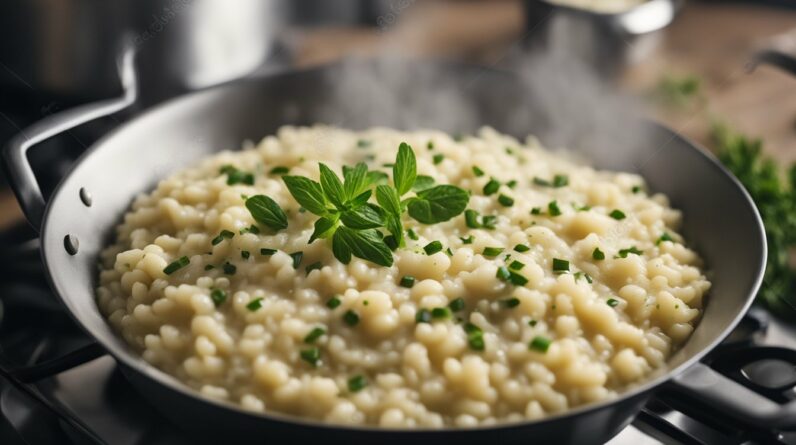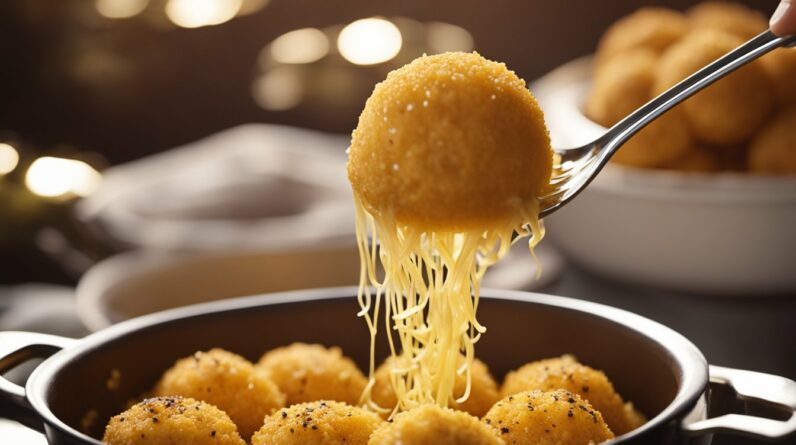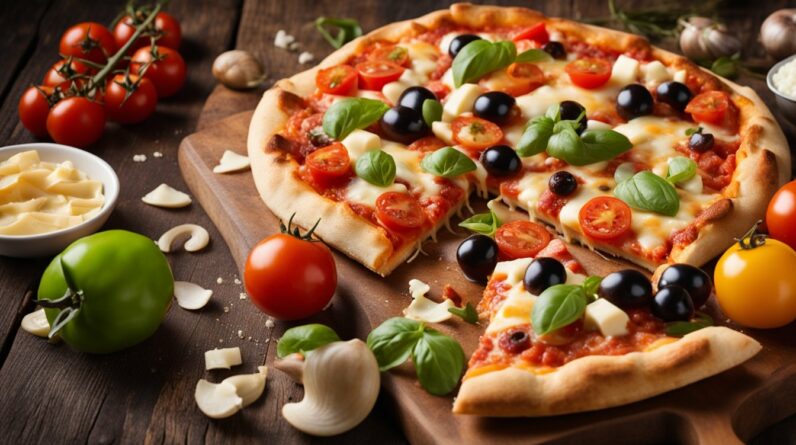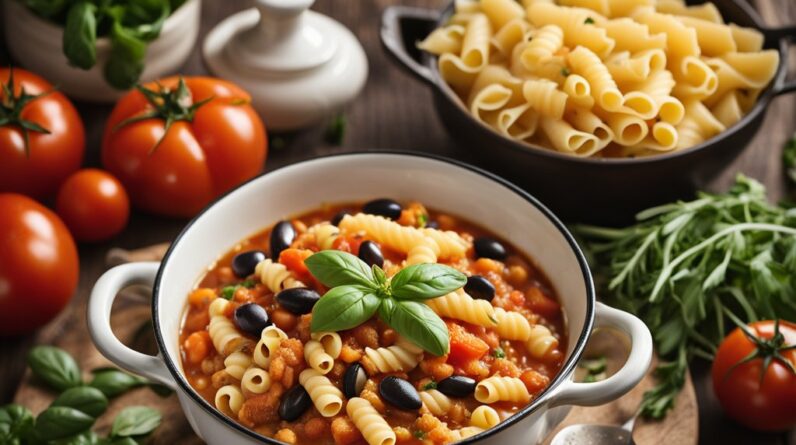When it comes to Italian cuisine, bread is an essential component that plays a prominent role in many dishes. From the classic bruschetta to the beloved panini, Italian bread comes in various types and serves a multitude of purposes in the culinary world. The types of Italian bread are as diverse as the regions they come from, with each variety offering its own unique flavor and texture. Whether it’s the crusty exterior of a ciabatta or the soft, airy crumb of a focaccia, Italian bread is a feast for the senses.
In addition to its delightful taste and texture, Italian bread also serves as a versatile ingredient in a wide range of dishes. It can be used as a base for savory bruschetta toppings, as a vessel for sandwich fillings, or as a complement to soups and salads. Its ability to absorb flavors and hold up to various cooking methods makes Italian bread a staple in many kitchens around the world. Whether you’re indulging in a simple slice with olive oil or using it as a key ingredient in a complex dish, Italian bread is a beloved and versatile culinary treasure.
The Classic Types of Italian Bread and Their Uses
Italian Ciabatta bread is a beloved staple, perfect for sandwiches or dipping in olive oil. Another classic Italian bread, Pane Cafone, hails from Naples and is a favorite for its light and airy texture. The perfect loaf of classic Italian bread is ideal for making bruschetta, with its crispy exterior and soft interior. Throughout the great war, these common types of Italian bread provided sustenance and comfort. With so many types to explore, each one brings its own unique flavor and texture to the table.
Italian Ciabatta Bread: a Beloved Staple
Italian ciabatta bread, with its rustic appearance and airy texture, has become a beloved staple in households and restaurants worldwide. This classic Italian bread is characterized by its irregular shape, with a crispy crust and a soft, holey interior. The name “ciabatta” translates to “slipper” in Italian, which perfectly describes the shape of this iconic loaf.
What makes Italian ciabatta bread stand out is its versatility. Its open crumb structure makes it perfect for soaking up sauces and olive oil, or for creating delicious sandwiches. Whether toasted and topped with tomatoes, basil, and mozzarella for bruschetta, or used as a base for a hearty panini, this bread adds a delightful crunch and chew to any dish.
Italian ciabatta bread’s popularity has undoubtedly cemented its status as one of the most cherished Italian bread types, beloved for its unique texture and exceptional flavor.
Introducing Pane Cafone: Naples’ Favorite Bread
Pane Cafone, Naples’ favorite bread! This traditional loaf boasts a crusty exterior and a soft, airy interior, making it a versatile choice for various culinary delights. Whether used for sandwiches, bruschetta, or simply enjoyed on its own, Pane Cafone adds an authentic Italian flair to any meal.
Crafted with high-quality flour and a slow fermentation process, Pane Cafone embodies the essence of Neapolitan baking traditions. The resulting bread showcases a complex flavor profile with subtle hints of sweetness and a satisfying chewy texture. Its rustic appearance and robust flavor make it a beloved staple in Italian cuisine, especially in the vibrant streets of Naples.
With its ability to hold up to hearty toppings and its delightful aroma, Pane Cafone is the perfect choice for creating mouthwatering bruschetta. Topped with fresh tomatoes, basil, and a drizzle of olive oil, this classic Italian bread shines in all its simplicity, making it a favorite among locals and visitors alike.
The Perfect Loaf: Insights on Classic Italian Bread
Italian bread types vary widely, from the crusty, chewy ciabatta to the soft, versatile focaccia. One popular choice for a perfect loaf is the hearty pane casareccio, known for its rustic appearance and rich, nutty flavor. Another beloved staple is the fragrant, rosemary-infused rosetta, perfect for pairing with a variety of dishes.
Italian bread has been a part of the country’s culinary tradition for centuries, and the art of bread-making has been passed down through generations. The perfect loaf is not just a simple food item; it is a symbol of heritage and craftsmanship. Each region in Italy has its own unique variation of bread, reflecting the local flavors and traditions.
Popular Italian White Bread Varieties
In this quick guide to popular Italian white bread, we’ll explore a few common bread varieties. Val D’Orcia is a lesser-known but delightful option worth trying. From the soft and fluffy texture of popular Italian white bread to the crusty goodness of Val D’Orcia, each type offers a unique experience. Whether you prefer the simplicity of common white bread or the nostalgia of Italian kids’ favorite, there’s a bread for everyone.
A Quick Guide to Common Italian White Bread
This type of bread is a staple in many households and is a versatile option for various meals. Known for its soft texture and mild flavor, Italian white bread is a favorite among both kids and adults. The crust is often thin and crispy, while the inside is fluffy and airy, making it perfect for sandwiches or to accompany a hearty pasta dish. Many people enjoy toasting slices of this bread and drizzling them with olive oil or spreading them with a thin layer of creamy butter.
Italian white bread is often used to make delicious garlic bread, a favorite side dish to accompany pasta or salad. The simplicity of the bread allows for the flavors of other ingredients to shine through, making it a popular choice for many classic Italian dishes. Whether you enjoy it plain or as part of a more complex recipe, Italian white bread is a beloved staple in the kitchen.
Popular Italian White Bread: the Kids’ Favorite
One common bread that kids absolutely love in Italy is the “italian kids’ favorite bread.” This soft and fluffy bread is a staple in many households, loved for its mild flavor and light texture. It’s perfect for making sandwiches, toasting, or simply enjoying with a spread of butter or jam. The “italian kids’ favorite bread” is often the go-to choice for parents looking to please their little ones at mealtime.
In fact, this bread is so beloved by Italian kids that it’s often compared to a legendary figure in the basketball world – Michael Jordan. Just like how Michael Jordan was the king of the court, this bread is the king of the lunchbox, winning the hearts and taste buds of kids all over Italy. Whether it’s for a quick snack or a school lunch, the “italian kids’ favorite bread” is a slam dunk choice for any child.
Val D’orcia: a White Bread Worth Trying
A hidden gem – Val D’Orcia. This delightful white bread variety originates from the picturesque region of Tuscany and is a true testament to the artistry of Italian baking.
Val D’Orcia bread is characterized by its crusty exterior and soft, airy interior. The dough is expertly crafted using high-quality flour, water, yeast, and a touch of salt, resulting in a texture that is both chewy and light. The subtle nutty flavor of the bread is enhanced by the use of extra virgin olive oil, which gives it a unique and delightful taste.
What sets Val D’Orcia bread apart is its traditional baking process. The dough is allowed to ferment slowly, allowing the flavors to develop fully. The result is a loaf of bread that is not only visually appealing but also bursting with authentic Italian flavors.
Italian Bread Across Regions: From Emilia Romagna to South Tyrol
Lets journey from the northeast region of FriuliVenezia Giulia to the German-speaking South Tyrol. The bread of FriuliVenezia Giulia reflects a fusion of Italian and Austrian influences, while South Tyrol’s bread is a staple in the German-speaking region along the Adige. Emilia Romagna, known for more than just pasta, offers a variety of famous foods, including their unique bread traditions.
The Bread of Friulivenezia Giulia: a Taste of the Northeast
This region boasts a unique culinary tradition that is heavily influenced by neighboring Austria and Slovenia. The bread of FriuliVenezia Giulia reflects this cultural blend, offering a taste that is distinct from the rest of Italy. One of the most beloved breads in this region is the “pagnotta del Friuli”, a rustic round loaf with a thick, crunchy crust and a soft, airy crumb. It pairs perfectly with the region’s renowned prosciutto and Montasio cheese. Another local favorite is “focaccia veneta”, a flatbread sprinkled with coarse salt and local herbs, a true delight for the taste buds. The bread of FriuliVenezia Giulia embodies the region’s rich history and diverse influences, making it a must-try for any bread enthusiast.
South Tyrol Bread: a Staple in the German-Speaking Region
Next we come to South Tyrol, where bread is not just a food staple, but a cultural cornerstone. Nestled in the German-speaking region of the Adige South Tyrol, the bread here reflects a unique blend of Italian and Austrian influences. The traditional South Tyrolean bread, known as “Vinschgauer Breatl,” is a hearty, dense loaf with a thick, crispy crust and a soft, chewy interior. This bread is often seasoned with caraway seeds, fennel, and anise, giving it a distinct and aromatic flavor that pairs perfectly with the region’s hearty stews and savory meats.
The process of making South Tyrol bread is deeply ingrained in the region’s heritage, with many families passing down their time-honored recipes through generations. Each bite of this bread tells a story of resilience, tradition, and the rich cultural tapestry of the German-speaking region.
Emilia Romagna’s Famous Foods: More than Just Pasta
Emilia Romagna, famous for its Parmigiano Reggiano cheese and Bolognese sauce, comes an array of bread varieties that perfectly complement the region’s famous dishes. Emilia Romagna is home to some of Italy’s most treasured breads, including the airy and crisp piadina, a type of flatbread that is a staple in the region. Made with flour, lard, and salt, the piadina is cooked on a terracotta dish and served warm, often filled with savory delights like prosciutto, cheese, and greens.
In addition to the piadina, Emilia Romagna also boasts the gnocco fritto, a puffy, deep-fried bread that is often paired with cured meats and cheeses. The region’s bread offerings are a testament to the diverse and flavorful foods that define Emilia Romagna’s culinary landscape.
Dop/igp Breads: the Crown Jewels of Italian Baking
DOP/IGP Italian breads, a collection of delicious regional breads that showcase the diverse flavors and textures of Italy. From the savory Pane Toscano, with its rustic crust and soft interior, to the crunchy delight of Pane Carasau, a unique Sardinian flatbread that is perfect for snacking, and the golden, crusty Pane Pugliese, the perfect companion for your Italian meal. These Italian breads are not just food, they are a cultural experience, each one representing the rich culinary traditions of its region.
Savory Pane Toscano: a Taste of Tuscany
Next to the picturesque region of Tuscany. Here, we encounter the savory delight of Pane Toscano, a bread deeply rooted in the culinary traditions of the area.
Pane Toscano, crafted with simple ingredients like flour, salt, water, and yeast, is a true representation of the rustic charm of Tuscany. Its crusty exterior gives way to a soft, chewy interior, making it a versatile complement to any meal. Whether paired with a hearty bowl of ribollita soup or used as a base for bruschetta, this bread is a staple in Tuscan households.
The unique texture and flavor of Pane Toscano are a testament to the artisanal techniques passed down through generations. The bread’s characteristic golden hue and earthy aroma evoke the rolling hills and sun-drenched vineyards of Tuscany, adding a touch of authenticity to any dining experience.
Crunchy Delight: the Unique Pane Carasau
Hailing from the stunning island of Sardinia, Pane Carasau is a unique and thin flatbread with a satisfying crunch that makes it stand out among other Italian breads. Also known as carta da musica, or “sheet music bread,” this traditional Sardinian bread is made by baking thin sheets of dough until they puff up, resulting in a paper-thin texture that is truly one-of-a-kind. Pane Carasau is perfect for pairing with antipasti, cheese, or even enjoying on its own as a delightful snack. Its versatility and delightful crunch make it a favorite choice for those seeking a unique and satisfying bread experience. Whether you’re enjoying it with a glass of wine or incorporating it into a charcuterie board, Pane Carasau is sure to elevate any dining experience. With its DOP/IGP status, this savory delight truly represents the crown jewels of Italian baking.
Pane Pugliese: the Perfect Companion for Your Italian Meal
It’s time to explore the delightful Pane Pugliese, the perfect companion for your Italian meal. Hailing from the sunny region of Puglia, this bread is a true testament to the rustic charm and simplicity of Italian baking. With its golden crust and airy interior, Pane Pugliese exudes a comforting aroma that fills the room as it bakes to perfection.
As you tear into a warm loaf of Pane Pugliese, the soft texture gives way to a satisfying chew, while the subtle hints of olive oil and sea salt dance on your taste buds. Whether you’re enjoying a leisurely meal with loved ones or savoring a solo dining experience, this delicious bread effortlessly elevates the flavors of any dish it accompanies. Its versatility makes it the ideal choice for pairing with antipasti, dipping in olive oil, or creating mouthwatering panini.
Unusual and Delectable Italian Breads
Next on the list is the world of Italian Easter breads with Brioche Tuppo and Cornetto Crescia. These uncommon delights offer a unique and delightful experience for your taste buds. Dive deeper into the realm of Italian biscotti with Casatiello, a more than just bread experience that will leave you craving for more. And don’t miss out on the unique and delicious Coppi Ferrarese, a must-try bread that boasts a rich history and irresistible flavor. Get ready to explore the diverse and extraordinary flavors of Italian breads with these hidden gems.
Brioche Tuppo and Cornetto Crescia: Uncommon Delights
The Brioche Tuppo, hailing from Sicily, is a soft, sweet bread topped with a distinct knot that sets it apart from the rest. Its rich, buttery flavor and fluffy texture make it an absolute delight to savor.
On the other hand, the Cornetto Crescia, originating from Marche, is a crescent-shaped bread with a soft, airy interior and a golden, slightly crunchy crust. Its light, yet satisfying taste makes it a versatile choice for pairing with both sweet and savory accompaniments.
Both of these uncommon delights offer a delightful departure from the more traditional Italian breads, adding a touch of whimsy and flavor to any meal or snack.
Biscotti and Casatiello: More than Just Bread
One such delight is the Biscotti, a classic Italian bread that goes beyond the ordinary. This twice-baked treat is infused with an irresistible combination of flavors, from almonds and pistachios to dried fruits and chocolate, making it a beloved choice for breakfast or dessert.
Moving on to the Casatiello, this is more than just bread. This classic Italian creation is a savory bread that is studded with an array of flavorful additions, such as cured meats, cheese, and eggs. The result is a rich and satisfying loaf that is a meal in itself, perfect for picnics or gatherings with loved ones.
And finally, we come to the unique and delicious Coppi Ferrarese. This bread, with its distinctive twisted shape and soft, airy texture, is a specialty of the Ferrara region.
The Unique and Delicious Coppi Ferrarese
This bread, with its distinctive shape and delightful flavor, is a true hidden gem of Italian baking. The Coppi Ferrarese is a specialty from the Emilia-Romagna region, particularly the city of Ferrara. Its name, “coppi,” refers to the traditional shape resembling a small dome, making it visually appealing and intriguing.
Crafted with patience and skill, the Coppi Ferrarese boasts a soft and airy interior, encapsulated by a golden, crunchy crust. The dough is prepared with high-quality flour, yeast, water, and a touch of salt, resulting in a simple yet divine taste that pairs perfectly with a variety of toppings or spreads. Whether enjoyed as a standalone treat or as an accompaniment to a meal, the Coppi Ferrarese is sure to captivate your taste buds and leave you yearning for more of its unparalleled texture and flavor.
Italian Christmas Breads: a Feast for the Holiday Season
The variety of Italian Christmas breads extends beyond the well-known Panettone, with each region offering its own distinct and delectable twist on this holiday staple. From the rich history to the diverse flavors and textures, Italian Christmas breads truly make for a feast during the holiday season. Let’s explore the significance of these breads in Italian culture, the ingredients that make them so special, and the joy they bring to families as they gather to celebrate this cherished time of year.
The Tradition of Italian Christmas Bread
The tradition of Italian Christmas bread becomes a central focus for families across Italy. The aroma of sweet, spiced dough fills the air as households prepare for the festive season. Italian Christmas bread, known for its rich history and significance, holds a special place in the hearts of many. Families come together to honor this tradition, passing down recipes and techniques from generation to generation.
One of the most beloved Christmas breads is the Pangiallo. This special treat, with its golden hue and delightful blend of candied fruits and nuts, is a symbol of abundance and prosperity. The unveiling of Pangiallo marks the beginning of the holiday celebrations, bringing joy and warmth to every home.
The tradition of Italian Christmas bread is a reflection of the country’s diverse culinary heritage. From the iconic Panettone to the lesser-known regional variations, the variety of Italian Christmas breads goes beyond mere indulgence. Each loaf tells a story of tradition, culture, and the spirit of togetherness during the holiday season.
Unveiling Pangiallo: a Special Christmas Treat
This special Christmas treat hails from the Lazio region and is a cherished part of the holiday season. The name “Pangiallo” comes from the Italian word “pan,” meaning bread, and “giallo,” which translates to yellow. This is because of the bread’s rich golden color, which comes from the generous use of saffron in the dough.
Pangiallo is studded with a variety of nuts, including almonds and hazelnuts, and is sweetened with honey and dried fruits. The result is a bread that is both hearty and sweet, making it a perfect accompaniment to a cup of hot cocoa or a glass of dessert wine. The beautiful aroma of saffron and the satisfying crunch of the nuts make Pangiallo a truly special treat that is eagerly anticipated during the holiday season. Truly, this Italian Christmas bread is a unique and delightful addition to any festive table.
The Variety of Italian Christmas Breads: Beyond Panettone
The Variety of Italian Christmas Breads is a true feast for the senses, offering a diverse selection of flavors and textures to celebrate the holiday season.
One such treat is Pangiallo, a traditional Italian Christmas bread that boasts a rich history and a unique blend of ingredients, including honey, nuts, and dried fruits. Its golden color and sweet aroma make it a standout addition to any festive table, symbolizing prosperity and good fortune for the coming year.
In addition to Pangiallo, there are other lesser-known Italian Christmas breads that hold their own in terms of taste and significance, such as the sweet and aromatic Pampepato, the indulgent Panforte, and the savory Genoese Pandolce. Each of these breads carries its own story and tradition, making them a cherished part of the Italian holiday season.
Low-Calorie Italian Bread: a Healthier Option
For low-calorie Italian bread, the key ingredient is Italian flour. This high-quality flour is the base of all Italian breads, providing a light, airy texture and delicious flavor. Using Italian flour, you can create a variety of low-calorie Italian breads, from traditional loaves to easy bread rolls. One popular option is crunchy bread, a low-calorie snack that you will love. With its satisfying crunch and healthy ingredients, it’s the perfect choice for those looking for a healthier option without sacrificing flavor. Try incorporating Italian flour into your low-calorie Italian bread recipes for a delicious and guilt-free treat.
Introducing Italian Flour: the Base of All Italian Breads
Italian flour is the foundation of all Italian breads, providing the base for their unique flavors and textures. Known for its fine texture and high protein content, Italian flour is an essential ingredient in creating the perfect loaf of bread.
Italian flour comes in different types, each suited for specific bread recipes. Type 00 flour, also known as doppio zero, is the most refined and is often used for making pizza dough and focaccia. Type 0 and Type 1 flours have slightly higher levels of bran and germ, making them ideal for rustic breads and whole grain loaves. These flours contribute to the distinct taste and texture of Italian bread, setting them apart from other bread varieties.
With Italian flour as the base, it’s possible to create low-calorie Italian bread options that provide a healthier alternative without compromising on flavor.
Low-Calorie Italian Bread: the Healthy Choice
At the heart of these delectable creations is the Italian flour, a key ingredient that sets the stage for the mouthwatering loaves that grace dining tables across the country. This high-quality flour is the foundation of traditional Italian bread-making, providing the perfect texture and taste that enthusiasts have come to love.
For those seeking a healthier option, low-calorie Italian bread is a fantastic choice. Made with the finest Italian flour, this bread offers a guilt-free indulgence without sacrificing taste or texture. With its light and airy interior, low-calorie Italian bread is the perfect companion to any meal. Whether it’s paired with a hearty soup or used as a base for a delicious sandwich, this healthy alternative is sure to satisfy your cravings while keeping your calorie intake in check.
Crunchy Bread: the Low-Calorie Snack You Will Love
This high-quality flour forms the foundation of a low-calorie Italian bread that will delight your taste buds. With just the right blend of ingredients, low-calorie Italian bread offers a guilt-free indulgence for those looking to satisfy their cravings without compromising on health.
Now, let’s talk about crunchy bread: the low-calorie snack you will love. Picture this: a crispy, golden exterior giving way to a light and airy interior, creating a symphony of textures with every bite. The satisfying crunch of each mouthful will leave you feeling fulfilled, all while keeping your calorie count in check. Whether enjoyed on its own or paired with your favorite toppings, this low-calorie Italian bread is the perfect choice for a guilt-free snack that doesn’t sacrifice on flavor. Say hello to your new go-to healthy indulgence.
Related Posts for Italian Bread Enthusiasts
Looking for more Italian bread inspiration? Check out our related posts for Italian bread enthusiasts! Whether you want to try your hand at making piadina pizza bianca or learn how to pair Italian bread with classic Italian dishes, our recent posts have got you covered. With our post navigation feature, you can easily explore a variety of DIY recipes and discover how to choose the right Italian bread for your meal. Expand your culinary horizons and indulge in the art of Italian bread-making with our helpful tips and tricks. Stay tuned for more mouthwatering ideas!
How to Choose the Right Italian Bread for Your Meal
Let’s explore some tips on how to choose the right Italian bread for your meal.
First, consider the texture of the bread. If you’re serving a hearty pasta dish, a chewy, rustic Italian bread with a dense crumb will soak up the sauce perfectly. On the other hand, if you’re preparing a light, salad-based meal, a crusty, airy Italian bread will provide a delightful contrast in texture.
Next, think about the flavor profile of the bread. For a bold and savory main course, a robust, whole-grain Italian bread with hints of herbs and garlic would be an excellent choice. If you’re serving a delicate seafood dish, a mild, slightly sweet Italian bread will complement the flavors without overpowering them.
Lastly, consider the shape and size of the bread.
Pairing Italian Bread with Classic Italian Dishes
Are you ready to elevate your Italian bread experience by pairing it with classic Italian dishes? Imagine sinking your teeth into a warm, crusty slice of Italian bread, perfectly complementing a hearty bowl of minestrone soup. The combination of the soft, chewy texture of the bread with the rich, flavorful broth is simply unbeatable. Or picture savoring a slice of bruschetta topped with juicy, ripe tomatoes, fresh basil, and a drizzle of olive oil on top of a crunchy slice of Italian bread. The contrast of the crispy bread with the juicy tomatoes creates a delightful explosion of flavors in your mouth. And let’s not forget about the traditional Italian dish of pasta served with a side of Italian bread. The bread is perfect for soaking up the delicious sauce, adding an extra layer of satisfaction to each bite. Experiment with different classic Italian dishes and find the perfect pairing for your Italian bread to take your dining experience to the next level.
Summing Up
Italian bread is a diverse and essential part of the country’s culinary traditions. From the iconic ciabatta to the regional specialties of Emilia Romagna and South Tyrol, Italian bread offers a wide range of flavors and textures for every occasion. Whether it’s the festive panettone for Christmas or the healthier, low-calorie options, Italian bread has something for everyone. The DOP/IGP breads, with their protected status, are the pride of Italian baking, while the unusual and unique varieties add an element of surprise to the bread scene. Overall, Italian bread is a rich tapestry of flavors and traditions that continues to captivate and delight bread enthusiasts around the world. So, explore the many types and uses of Italian bread, and embark on a delicious journey through the diverse and flavorful world of Italian baking. Buon appetito!












